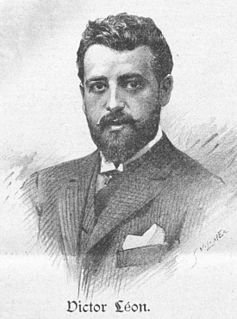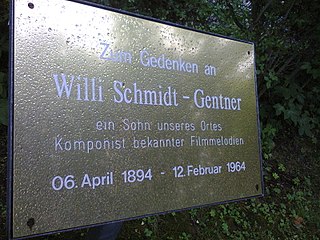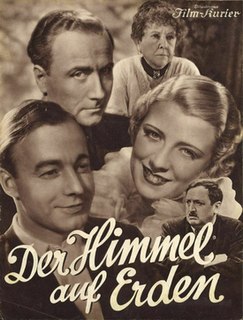Related Research Articles

Cinema of Austria refers to the film industry based in Austria. Austria has had an active cinema industry since the early 20th century when it was the Austro-Hungarian Empire, and that has continued to the present day. Producer Sascha Kolowrat-Krakowsky, producer-director-writer Luise Kolm and the Austro-Hungarian directors Michael Curtiz and Alexander Korda were among the pioneers of early Austrian cinema. Several Austrian directors pursued careers in Weimar Germany and later in the United States, among them Fritz Lang, G. W. Pabst, Josef von Sternberg, Billy Wilder, Fred Zinnemann, and Otto Preminger.

Sascha-Film, in full Sascha-Filmindustrie AG and from 1933 Tobis-Sascha-Filmindustrie AG, was the largest Austrian film production company of the silent film and early sound film period.

Count Alexander "Sascha" Joseph von Kolowrat-Krakowsky was an Austrian film producer of Bohemian-Czech descent from the House of Kolowrat. A pioneer of Austrian cinema, he founded the first major film studio Sascha-Film in Vienna.

Géza von Bolváry was a Hungarian actor, screenwriter, and film director, who worked principally in Germany and Austria.

Sodom und Gomorrha: Die Legende von Sünde und Strafe is an Austrian silent epic film from 1922. It was shot on the Laaer Berg, Vienna, as the enormous backdrops specially designed and constructed for the film were too big for the Sievering Studios of the production company, Sascha-Film, in Sievering. The film is distinguished, not so much by the strands of its often opaque plot, as by its status as the largest and most expensive film production in Austrian film history. In the creation of the film between 3,000 and 14,000 performers, extras and crew were employed.
Eduard von Borsody was an Austrian cameraman, film editor, film director, and screenplay writer.
Julius von Borsody was an Austrian film architect and one of the most employed set designers in the Austrian and German cinemas of the late silent and early sound film periods. His younger brother, Eduard von Borsody, was a film director in Austria and Germany. He is also the great-uncle of German actress Suzanne von Borsody.

Karl Hartl was an Austrian film director.

Victor Léon, also Viktor Léon was a well-known Jewish Austrian-Hungarian librettist. He collaborated with Leo Stein to produce the libretto of Franz Lehár's romantic operetta The Merry Widow.

Dunja is a 1955 Austrian historical drama film directed by Josef von Báky and starring Eva Bartok, Karlheinz Böhm, Ivan Desny and Walter Richter. It is an adaptation of the shorty story The Station Master by Alexander Pushkin, which had previously been made into the 1940 film Der Postmeister by Gustav Ucicky.

Willy Schmidt-Gentner was one of the most successful German composers of film music in the history of German-language cinema. He moved to Vienna in 1933. At his most productive, he scored up to 10 films a year, including numerous classics and masterpieces of the German and Austrian cinema.

Wiener Film is an Austrian film genre, consisting of a combination of comedy, romance and melodrama in a historical setting, mostly, and typically, the Vienna of the late 19th and early 20th centuries. The Wiener Film genre was in production between the 1920s and the 1950s, with the 1930s as its high period.
Ernst Marischka was an Austrian screenwriter and film director. He wrote for more than 90 films between 1913 and 1962. He also directed 29 films between 1915 and 1962. He wrote and directed the Sissi trilogy - Sissi (1955), Sissi - The Young Empress (1956) and Sissi - Schicksalsjahre einer Kaiserin (1957). The films were based on the life of Empress Elisabeth of Austria. He was the brother of Hubert Marischka. He was named for the Academy Award for Best Original Screenplay in 1946, for A Song to Remember (1945).
Emil Stepanek was an Austrian set designer and film architect.

Money on the Street is a 1930 Austrian-German romantic comedy film directed by Georg Jacoby and starring Lydia Pollman, Georg Alexander, and Franz Schafheitlin. It is notable for the screen debut of Hedy Lamarr, who played a small role as an extra.

Karl Ehmann was an Austrian stage and film actor whose career spanned both the silent and sound eras of the film industry.

Voices of Spring is a 1952 Austrian musical film directed by Hans Thimig and starring Paul Hörbiger, Hans Jaray and Senta Wengraf. It is part of the operetta film genre.

Heaven on Earth is a 1935 Austrian musical comedy film directed by E. W. Emo and starring Lizzi Holzschuh, Ilona Massey, and Heinz Rühmann.
Sievering Studios were film production studios located in Sievering, a suburb of the Austrian capital Vienna.
References
- this article is a translation of the equivalent on the German Wikipedia, retrieved on 16 November 2007
- Franz Antel, Christian F. Winkler, Hollywood an der Donau. Geschichte der Wien-Film in Sievering, Wien (Edition S, Verlag der Österreichischen Staatsdruckere) 1991
- Wilhelm Guha, Die Geschichte eines österreichischen Filmunternehmens. Von der Sascha-Film-Fabrik in Pfraumberg in Böhmen zur Wien-Film, Vienna 1976
- Günter Krenn: Die Kulturfilme der Wien-Film, 1938-1945. Österreichisches Filmarchiv, Vienna 1992.
- Helene Schrenk, Die Produktion der Wien-Film zwischen 1939 und 1945, Vienna 1984
- Walter Fritz, Die Wien-Film. Geboren 1910! Gestorben 1986?; in: Sterz 36, Graz 1986, pp. 12f
- Walter Fritz, Hollywood in Wien – oder die „Wien-Film“ ein Auftrag im Dritten Reich; in: Rathkolb, Duchkowitsch, Hausjell, Die veruntreute Wahrheit, Salzburg 1988, pp. 35–42